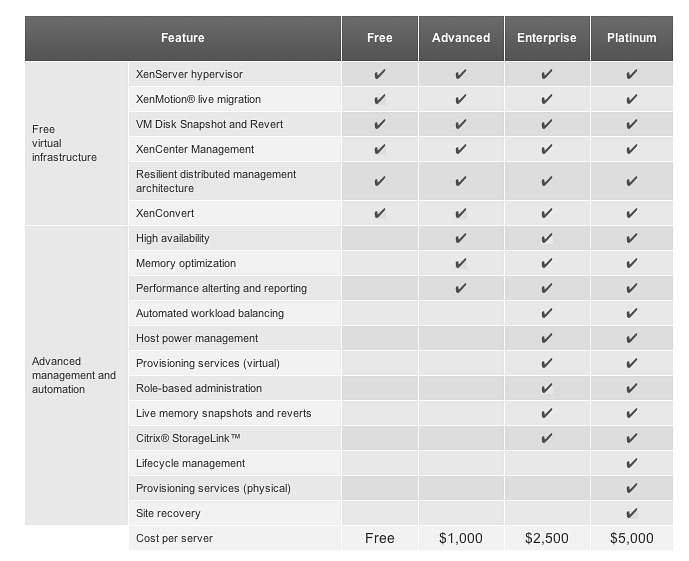Sponsored: Business Continuity Using Citrix XenServer v5.6
Latest Release of Citrix XenServer Brings Enhanced Disaster Recovery
With its latest announcements of XenServer-related products, Citrix has strengthened its ability to provide more capable disaster recovery (DR) and business continuity services using its server virtualization line of products. These have lots of appeal for enterprises that previously would have either considered a full DR solution too expensive or who are using regular tape backups and finding them cumbersome. A combination of services including high availability (HA), live migration of running virtual machines (VMs), virtual storage management and near-term server failover that were previously only the province of very expensive and customized clustered configurations are now available in the virtual world and can serve as a good substitute for many enterprise's DR applications, too. This is because VMs are easily portable and replicated across the Internet, so you can quickly get a secondary site up and running when the primary server has failed.
One of the issues with custom clustering solutions is that they require identical hardware and operating system versions for each physical machine that was part of the cluster: virtualized servers are more forgiving and flexible, not to mention less expensive too. Another issue is that many clusters required very high-speed Internet links to support a remote DR site: virtualized solutions are also less demanding of connectivity too.
XenServer v5.6, which began shipping at the end of May, offers some changes in how these its DR services are packaged and delivered from previous versions. Citrix will offer four different versions:
- A free version that includes XenConvert, its physical-to-virtual conversion utility; and XenMotion, its live migration utility where running VMs can be moved from one physical host to another. This is available for managing both XenServer and Microsoft HyperV installations.
- An Advanced version that adds high availability and some other management tools, which will sell for $1,000 or $30 per month for cloud service providers. This version is only available for XenServer.
- An Enterprise version that adds to the above features virtual provisioning services, live memory snapshots, and StorageLink storage management software for $2,5000, and
- A Platinum version that adds physical provisioning services and Site Recovery tools for $5,000. It is this version that we will focus on and show you what is needed to implement a true DR plan and how the various pieces of Citrix software and third-party hardware fit together.
Download a Free Copy of Citrix XenServer Here
Get Tom's Hardware's best news and in-depth reviews, straight to your inbox.
Current page: Latest Release of Citrix XenServer Brings Enhanced Disaster Recovery
Next Page Site Recovery Supported on IBM, NetApp and HP Storage LinesDavid Strom is the former editor-in-chief at Tom's Hardware and the founding editor-in-chief of Network Computing magazine. He has written thousands of articles for dozens of technical publications and websites, and written two books on computer networking.
-
dEAne Virtualized solutions should be less demanding with regards to connectivity issue coz there are clusters that required a high speed internet connection to support a remote DR site. Well if Citrix XenServer can address well goodReply
